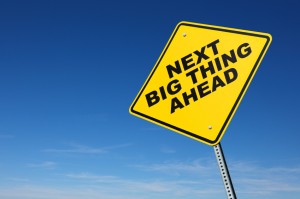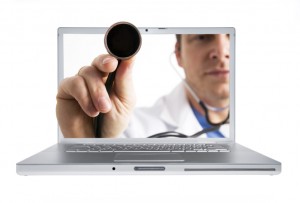Innovation: Ideas That Generate Ideas
I’ve spent the past several days in the Minnesota woods at a client’s executive retreat. The client is a software company that has made a number of acquisitions over the past few years. A good portion of the discussion at the retreat focused on how to build a platform that can: 1) integrate the various acquisitions; 2) deliver a common interface; 3) simplify the support load; 4) provide a foundation for developing new functionality more quickly.
The discussion got me thinking about platforms — innovations that generate innovations. I’ve written a lot about innovation over the past year and especially the role of serendipity and mashup thinking. I’ve generally focused, however, on innovations as an end result. In other words, we adopt certain behaviors and modes of thinking and the result is an innovation. We then repeat the process and (hopefully) get another innovation. Creating the innovation essentially ends the process.
Platform thinking, on the other hand, can lead us to innovations that spawn innovations. As Steven Johnson points out, platforms abound in the natural world. Johnson builds an extended metaphor around the coral reef — a platform for unimaginably rich plant and animal life. Once the process gets started (in an otherwise barren sea), the reef builds a virtuous circle that attracts and facilitates multiple life forms. Part of the secret is collaboration. The CO2 that one animal gives off as waste becomes the building block for another animal’s home. Similarly, oxygen is a waste product for some reef denizens but the lifeblood of others.
In the human world, the Internet is probably the best recent example of a platform. The Internet creates both serendipity (we get to meet lots of people) and mashup thinking (we can easily find lots of new ideas to mash together). The Internet also takes care of a lot of the dirty work of information sharing. Just as the coral reef makes it easy for many animals to find a home, the Internet makes it easy for people like me to create websites and share information. We often hear the metaphor of researchers standing on the shoulders of giants. My website is standing on the shoulders of a very rich (and essentially free) technology stack.
Platform thinking is innovation taken to the next step. We think about how to create something that creates something. I’m generally a proponent of free markets, but Johnson makes as strong argument that the most fundamental platforms come from public agencies. Certainly, the Internet did not come from market-driven competition. Rather, it resulted from the collaboration of many specialists from many disciplines in an open environment. That’s pretty much like a coral reef.
So, what’s the next platform? I’m guessing that it’s a mashup of: 1) the human body, 2) secure communications, and 3) Internet sensors. We already have millions of Internet sensors monitoring the environment — everything from air pressure, to ocean salinity, to volcanic pressures. The next frontier could well be sensing human health conditions. We already have wearable condition monitors. For instance, friends of mine run a small company in Denver called Alcohol Monitoring. They provide a wearable device, with secure communications, that alerts probation officers when one of their wards has been drinking. Within a decade, I’d guess that health condition monitors will migrate from outside the body to inside the body. They’ll provide critical data that can help us foresee — and forestall — health crises. They’ll also provide a platform for a huge wave of new ideas, services, and fortunes. Sounds like a coral reef.
Round the Clock Healthcare — for Free?
When I go on a long bike ride, I usually wear a heart monitor. I like to know how hard my ticker is tocking. I also carry a smartphone with GPS in it. I like to know where I am … and where the nearest hospital is.
Let’s do a little mashup thinking. What if my heart monitor were connected to the phone and GPS? Here’s a scenario: the heart monitor notices that my heart is going haywire. It sends a signal to the phone. The phone uses GPS to locate the nearest hospital, sends an emergency call (perhaps using Amcom Mobile Connect*), along with my location. The hospital dispatches an ambulance to my GPS location to pick me up. It could save my life. And it’s all based on currently available technologies. All we have to do is mash them up.
A few weeks ago I wrote a post about how a strategist might think about healthcare costs. All the experts say that healthcare costs are bound to go up. In my experience, when all the experts point in one direction, it’s always useful to look in the other direction — just to make sure.
Several of my friends let me know that I was wrong — healthcare costs will continue to rise, if for no other reason than the government is involved. That wasn’t really my point. I was merely trying to illustrate strategic thinking. But now I am thinking about healthcare costs and I wonder if new technologies won’t have a huge impact. By and large, many of those technologies are already available. We just need to mash them up.
Here’s a simple example — the HAPIfork, which was introduced at this year’s Consumer Electronic Show (CES). The HAPIfork mashes up a fork, a timer, and (perhaps) an accelerometer to keep track of how fast you’re eating. HAPIfork measures the number of “fork servings per minute” and loads the data to a dashboard on your smartphone. You can keep track of how fast you’re eating. Apparently, eating slowly is better for you. You can adjust your behavior to be healthier.
I don’t think HAPIfork is going to revolutionize healthcare – but it hints at things to come. As the internet of things evolves, we’ll connect more and more sensors to monitor the word around us. We’ll also monitor our health with sensors that can inform us more precisely of our own condition. Am I getting dehydrated? Is my blood pressure up? Do I need to take corrective actions? A connected sensor could also alert my physician to potential trouble. Imagine, for instance, an internet toilet that uses chemical sensors to monitor your, um, output. If something is out of whack it lets you know. If something is really out of whack it lets your physician know.
Could connected healthcare reduce our costs in the long run? The real answer is that nobody knows. But it’s a question worth asking and technology worth pursuing. It’s an “unforeseen” solution that could just prove the experts wrong.
* I consult to Amcom and, yes, this is a shameless attempt to generate publicity for one of my clients.
Innovation and Memory
Do you forget stuff? Yeah, me too. It makes it harder to be innovative.
The trouble is that innovative ideas don’t come all polished up and wrapped in a pretty bundle. When a creative person describes her process, it may seem that innovative new ideas arrive in a flash of insight. That’s a nice way to tell a story but it’s not really the way it happens.
In truth, innovation is more like building a puzzle — when you don’t know what the finished piece is supposed to look like. You collect a piece here and a piece there. Perhaps, by putting them together, you create another piece. Then, a random interaction with a colleague supplies another piece — which is why random interactions are so important.
Each piece of the puzzle is a “slow hunch” in Steven Johnson’s phrase. You create a piece of an idea and it hangs around for a while. Some time later — perhaps many years later — you find another idea that just happens to complete the original idea. It works great if, and only if, you remember the original idea.
In previous posts on mashup thinking, I may have implied that you simply take two ideas that occur more or simultaneously and stick them together. But look a little closer. One of my favorite mashup examples is DJ Danger Mouse, who took the Beatle’s White Album and mashed it up with Jay Z’s Black Album to create the Grey Album, one of the big hits of 2004. But how long was it between the White Album and the Black Album? Well, at least a generation. I remember the White Album but not the Black Album. I think our son is probably the reverse. Neither one of us could complete the idea. DJ Danger Mouse’s originality comes from his memory. He remembered a “slow hunch” — the White Album — and mashed it into something contemporary.
So, how do you remember slow hunches? By writing them down. In fact, that’s one of the reasons I started this blog — so I won’t forget good ideas. I can now go back and search for ideas that I thought were important several years ago. I can recall them, put them together with new hunches, and perhaps create new ideas.
I like to read widely. I’m hoping that ideas — both old and new — will collide more or less randomly to create new ideas. Unfortunately, I often forget what I read. With this blog, I now have a place store slow hunches. And, since it’s public, I’m hoping that you’ll help me complete the cycle. Let’s get your random ideas colliding with my random ideas. That will help us both remember, put our hunches together, and come up with bright new ideas. Sounds like a plan. Now we just need to remember to stick with it.
Sunday Shorts – 5
Some interesting things I spotted this week, whether they were published this week or not.
The Economist asks, will we ever again invent anything that’s as useful as the flush toilet? Is the pace of innovation accelerating or decelerating? And what should we do about it, if anything?
When we think about innovation, we often focus on ideas and creativity. How can we generate more good ideas? But what about the emotional component of innovation? For innovative companies, emotional intelligence may trump technical intelligence. Norbert Alter answers your questions from Paris.
We’re familiar with the platform wars for mobile applications. Will Apple’s iOS become the dominant platform? Or maybe it will be Android from Google? Perhaps it’s some version of Windows? But what if the next great mobile app platform is a Ford or a Chevy? (Click here).
For my friends in Sweden, here’s McKinsey’s take on the future of the Swedish economy. Things are looking up — just don’t rest on your laurels.
Where does America’s R&D money go? Here’s an infographic that shows how the Federal government has invested in research over the past 50 years.
The Greeks had lots of tricks for memorizing things. They could hold huge volumes of information in their heads. But does memory matter anymore? After all, you can always Google it, no? William Klemm writes that there are five reasons why tuning up your memory is still important. And he’s a Texas Aggie so he must be right.
Creativity in Five Steps

Just five more steps.
How does creativity happen? Is there a pattern — more or less standard — that we can repeat? Is there a process that can lead us from ordinary beginnings to extraordinary ends? Mihaly Csikszentmihalyi — while not guarateeing results — writes that creativity typically evolves through five stages.
The first stage is preparation. Basically, you need to know the rules before you break them. Thomas Kuhn writes that scientific paradigms reflect a basic consensus of how the world operates. Prior to Copernicus, the astronomical paradigm held that the earth was the center of the universe. Before Copernicus could change the paradigm, he had to immerse himself in it. Only then could he make the observations that changed the paradigm.
The second phase is incubation, “… during which ideas churn around below the threshold of consciousness.” This is when I like to go for a walk. I like to lay things aside, clear my head, and let my mind wander. It’s a haphazard process — sometimes nothing happens. Sometimes I simply forget what I was thinking about. Other times, however, something bubbles up that’s worth capturing. (One of the reasons I write this blog is to double back on my own thinking, recall what I wrote months ago, and perhaps make connections I would otherwise miss).
Third, is the insight — the Aha moment. As we saw in the article on sleepiness and creativity (click here), focusing intently on the problem at hand may actually inhibit the Aha experience. When you focus, you block out random thoughts and stray ideas. But it’s those very thoughts and ideas that may produce the insight. When you’re tired — or when you can induce your mind to wander — those stray thoughts are not blocked out and can help you see things more creatively.
Fourth is evaluation, “…when the person must decide whether the insight is valuable and worth pursuing.” This is a difficult step. You think you’ve had a brilliant flash of insight … you start dreaming of a trip to Stockholm to accept a Nobel Prize. On the other hand, maybe it’s just a crackpot idea that your colleagues will laugh at. A thorough understanding of the current paradigm will help. If you’re a master of your discipline, you’ll have a much better idea of which ideas are worth pursuing and which are just goofy.
The fifth step is elaboration. You develop the idea, conduct the research, test your hypotheses, and present your conclusions to your colleagues — who may just rip it apart. As Csikszentmihalyi notes, “This is what Edison was referring to when he said that creativity consists of 1 percent inspiration and 99 percent perspiration.”
Does the five-step process always produce creative innovations? No, not at all. But, if your purpose is to create new ideas, products, and services you should always be cognizant of where you are in the process. Following the process doesn’t guarantee success. But not following it virtually guarantees failure.
You can find Mihaly Csikszentmihalyi’s book here. Thomas Kuhn’s book is here.



